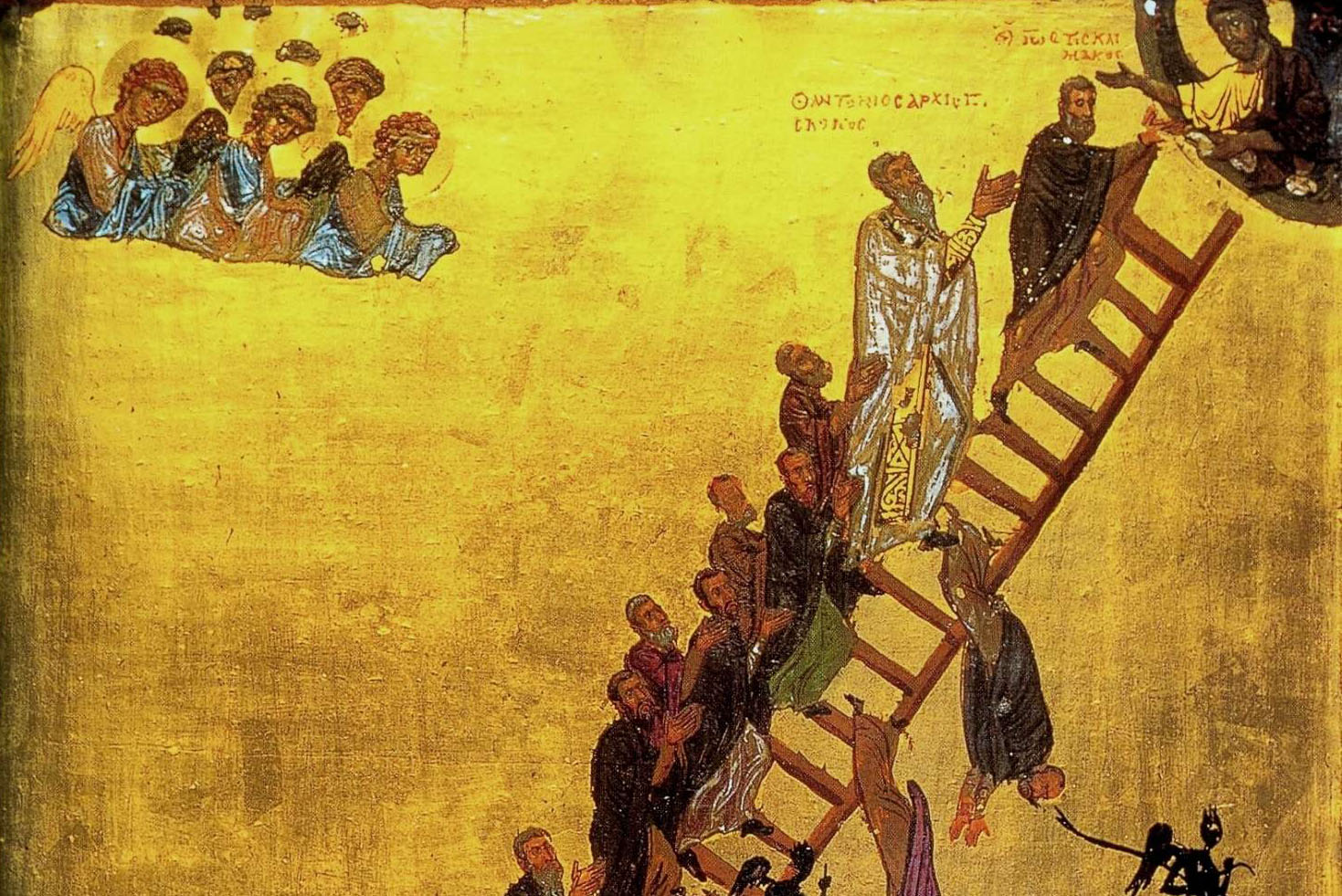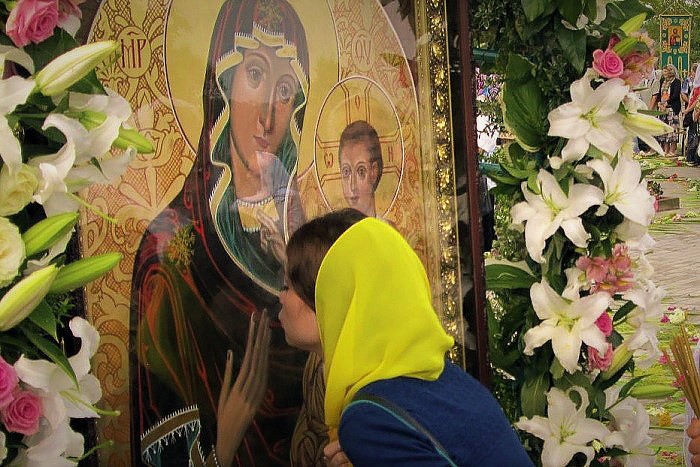
How did gold come to be used in church art? Why does it adorn the images of the saints? Is it true that it is an essential element in an icon? Why do some icons have gold backgrounds, and is it true that more gold makes a better icon?
Gold is a noble, soft, and ductile metal with beautiful warm glow. While being very malleable, it does not lose its properties with time. “Silk will not tear, damask steel will not dent, and red gold will not rust,” reads a known Russian proverb. Gold can be beaten into very fine leaves. By grinding and adding an adhesive, leaf gold is transformed into gold paint. Putting gold leaf amid bits of glass and melting the mix in an oven results in another valuable material called gold smalt. It is highly durable, has a nice glow, and is mostly used for mosaics. In church art, gold is used in a variety of forms but has remained its essential element and attribute at all times. It has been used extensively by church artists to add brilliance, luminosity, and elegance to their works.
Legacy of the Fayum portrait tradition
Iconography has its origins in the art works of ancient Egypt dating back first few centuries after Christ. They were made in what is now know as the Fayum portrait tradition. It owes its name to the Fayum Oasis of modern-day Egypt where are a large number of Fayum portraits were discovered. The portraits were made mostly in the encaustic, or wax painting technique, although some of the works from the late ancient times were painted in gold.
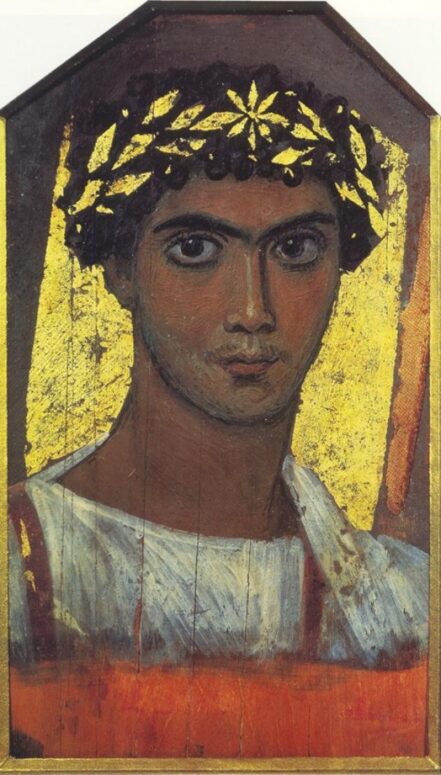
A hallmark of goodness
At present, the name ‘gold’ is also used in everyday speech to refer to something good and of great value. We say of our loving mother, “she has a heart of gold”, and we use the description “gold-mouthed” to refer to an eloquent and effective speaker. Gold has won much praise, and many theologians, philosophers, and historians wrote about its symbolism. Gold’s symbolism has numerous aspects, rivalling the number of hues in a gold mosaic.
In the eyes of the Russian philosopher Yevgeny Trubetskoy, gold was the “Colour of colours”, and “a miracle of miracles”. He wrote: “Gold is the colour of the sun, the only colour of the Divine world; all the other colours are peripheral. There is one God. His Divine Light shines brighter than the sun.”
In her essay about the significance of gold in iconography, Olga Popova concludes: “In iconography, gold is always a symbol of God’s invisible presence and the connection between heaven and earth.” Does more gold make a better icon? Olga Popova responds: “The attraction of gold to iconographers is not just a reflection of its material value and worth, but more importantly of its profound symbolism in the Christian tradition, which sees in gold the glow of the Divine Light.
“Gold is a colour, but it is also the light,” writes Irina Yazykova. To Victor Bychkov, the role of gold in an icon is similar to that of a beacon that illuminates the rest of the picture. The golden background, the halos, threads, and rays of gold are some examples of this. Let us consider in detail some of the most prominent types of such “beacons of gold”.
Halos
Halos are also known by their Latin name “nimbus” which translates as “haze” or “cloud”, and also as “glow”. In the Christian tradition, the halo is a symbol of sanctity. Viewing the Ladder of Divine Ascent icon from a certain angle, we will the halos glow together with its luminous background. The technique used to produce this effect is called “gold on gold”.
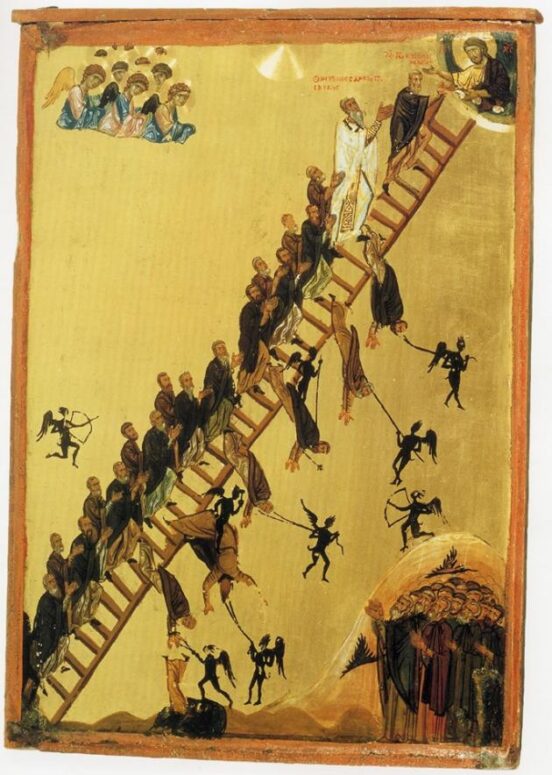
Icon background
In Russian, the word ‘background’ derives from the French ‘fond’, translated as ‘depth’. The golden background in an icon appears deep and infinite. Olga Popova writes: “The glistening of the gold in the background creates the impression of endless and inconceivable depth. The gold background represents an impenetrable barrier for the eye, turning every scene depicted in the icon into a mystery”. Popova notices the regularity of the background, which shows no ground or floor. “This makes the figures depicted in it appear weightless and are hovering in the air”, she continues. The Byzantine icon showing Saint Athanasius the Confessor and Bishop of Alexandria with Saint Anthony also has a golden background and displays similar features.
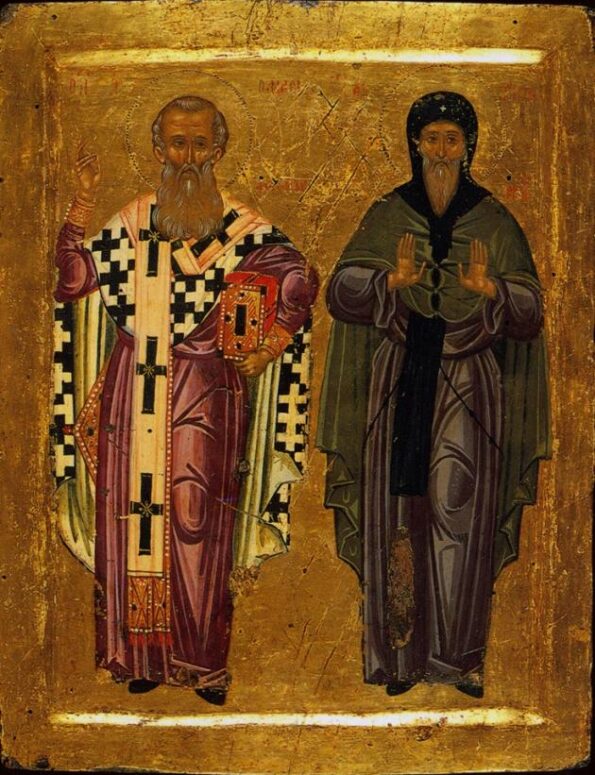
Numerous other icons of the above-mentioned St. Catherine Monastery on Mount Sinai are also painted on a background of gold. The figures in the icon of the Annunciation are translucent; they were painted in light touches over a leaf of pure gold. The same technique was used in the Divine Ascent icon of Sinai. The images in this exquisite and elegant work – the palace, church, altar, the city wall, the gates, and the Garden of Eden are all seen to represent the Heavenly Jerusalem, the way to which was revealed at the moment of the Annunciation.
We will return to the theme of the Heavenly Jerusalem later on as we discuss the ancient art of church mosaic.
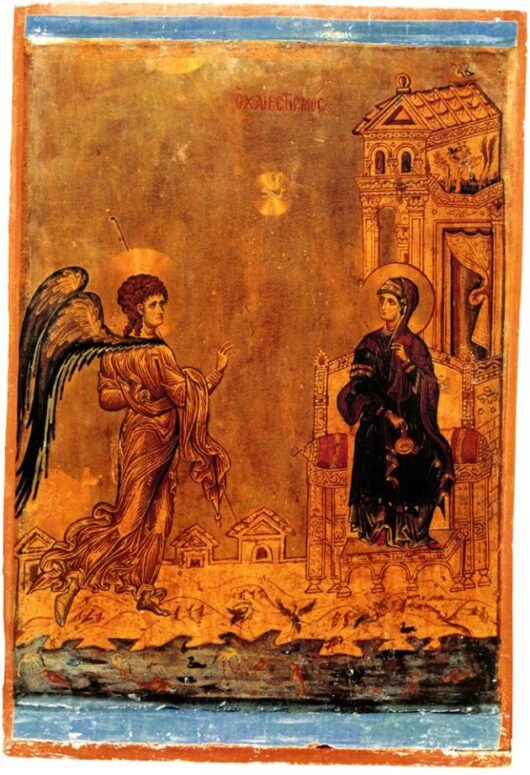
Golden letters and script
The ancient icons have still preserved the golden threads visible in the saints’ vestments, the covers of the scriptures, the wings of the angels, and the finely combed hair of the Lord’s messengers.
The old Russian icon of Archangel Gabriel – called “Angel with Golden Hair” – fills the soul of the spectator with peace and joy and turns it towards Heaven. Incidentally, the icon in its present form is only a shadow of the original image. Its background was not green, as now, but golden. One can only imagine the icon’s past splendour. The thin golden threads in the angel’s waving hair and the golden rays on his clothing are only vestiges of the original magnificence of the angel’s depiction, sorrowful and exalted.

The Icon of Annunciation of Ustyug shows a much more lustrous and joyous image of Archangel Gabriel as he hurries to bring the good news to the Mother of God. Incidentally, the icon was not painted in Velikiy Ustyug; its origins are from Novgorod. It would have had a much brighter and shinier look if it had not lost a large part of its original golden background.
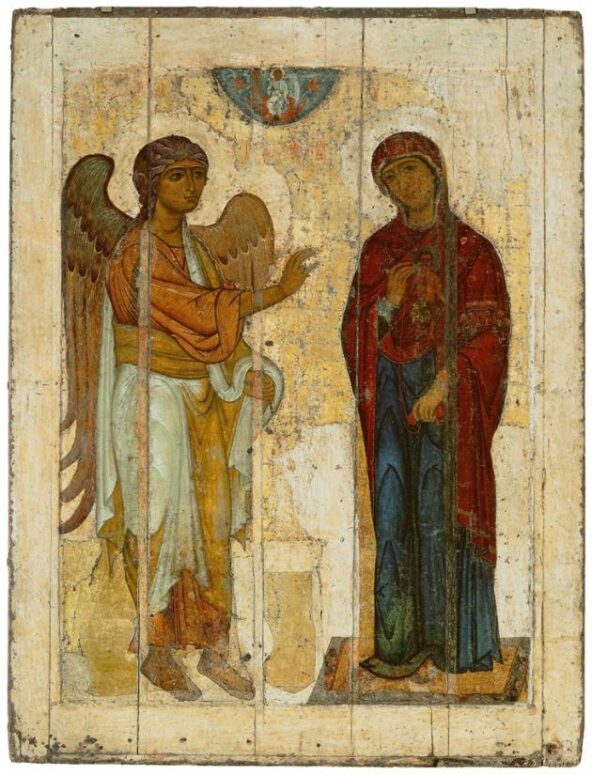
The Mandylion icon shows the ascetic and majestic image of the Saviour. His hair is laced with golden threads in a regular pattern. The image projects great strength and steadfastness.

These wondrous monuments of Ancient Russian iconography date back to the 12th century, which was indeed the golden age for the art of the young Christian state in the period preceding the invasion of the Mongols.
To be continued…
List of scholars and experts cited:
Prince Evgenii Nikolaevitch Troubetzkoy – Russian religious philosopher
Olga Popova – Doctor of Fine Arts, expert in Byzantine Art
Iryna Yazykova – art critic, candidate of Culture Studies
Victor Bychkov – Doctor of Sciences (Philosophy)
Natalya Sheredega – Head of the Department of Old Russian Art, State Tretyakov Gallery of Moscow
Vladimir Ovsiychuk – Doctor of Fine Arts
Ludmila Milyaeva – Doctor of Fine Arts, Professor, expert in Ukrainian iconography
Translated by The Catalogue of Good Deeds
Source: https://pravlife.org/ru/content/zoloto-na-ikone-za-chto-emu-hvala

